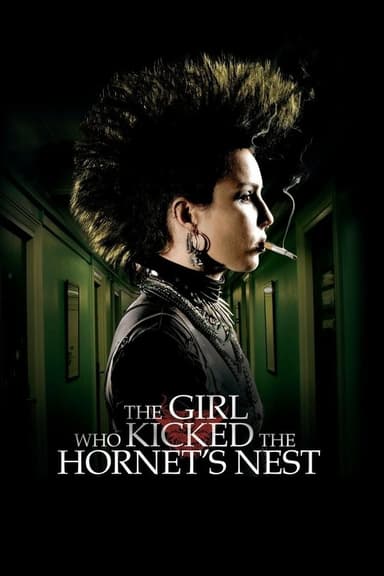
The Girl with the Dragon Tattoo
2009 • Crime, Drama, Mystery, Thriller • R
Swedish thriller based on Stieg Larsson's novel about a male journalist and a young female hacker. In the opening of the movie, Mikael Blomkvist, a middle-aged publisher for the magazine Millennium, loses a libel case brought by corrupt Swedish industrialist Hans-Erik Wennerström. Nevertheless, he is hired by Henrik Vanger in order to solve a cold case, the disappearance of Vanger's niece
Runtime: 2h 32m
Why you should read the novel
Stieg Larsson's novel offers a richer, more immersive experience than the film adaptation ever could. The intricate details of the investigation and the development of Lisbeth Salander's complex character are thoroughly explored across the pages. Readers get to see the world through her unique perspective, while slowly unraveling her enigmatic background in a way that the movie's time constraints simply can't allow.
The book delves deep into themes of corruption, social injustice, and the abuse of power in Swedish society. It provides an extensive background for all the main characters, enabling readers to understand their motivations, fears, and relationships on a much deeper level than the film portrays. Larsson's sharp narrative style and his weaving of multiple storylines enhance the suspense and provide surprises the movie omits or condenses.
By choosing to read the original novel, you'll also experience the authentic pace and atmosphere intended by the author. Every twist and revelation is carefully constructed, rewarding attentive readers with a heightened sense of discovery. The book delivers far more than a thrilling mystery; it offers a thought-provoking critique of society that lingers long after the last page.
Adaptation differences
One significant difference between the film adaptation and the original novel is the depth of character development. The book spends substantial time exploring Mikael Blomkvist’s background, his relationships, and the impact of his libel case—giving readers a nuanced understanding of his motivations. Conversely, the film streamlines his backstory and skims over the complex web of relationships he maintains, in the interest of pacing.
Lisbeth Salander’s psychological depth is also reduced in the film adaptation. The movie tends to present her as a mysterious and skilled hacker, but does not fully investigate her past traumas, her experiences with social services, and the deeply ingrained mistrust she has of authority figures. Readers of the novel gain a much stronger sense of empathy for Lisbeth through the intimate glimpses into her troubled life and inner turmoil.
Another main difference stems from the handling of subplot details. The book is packed with secondary mysteries and more elaborate supporting characters, particularly in the Vanger family. The film, however, omits or condenses several of these subplots to maintain a faster pace and fit within typical movie runtime expectations. As a result, some key clues and red herrings that drive the investigation in the book are missing or downplayed in the movie.
The narrative structure also differs notably. The novel shifts perspectives between Mikael and Lisbeth, allowing readers to fully immerse themselves in each character’s thoughts and discoveries. In contrast, the film largely follows an external point of view, focusing more on plot progression than introspection. This leads to a less nuanced portrayal of internal conflicts and emotional journeys, which are central to the novel’s enduring appeal.
The Girl with the Dragon Tattoo inspired from
The Girl with the Dragon Tattoo
by Stieg Larsson










